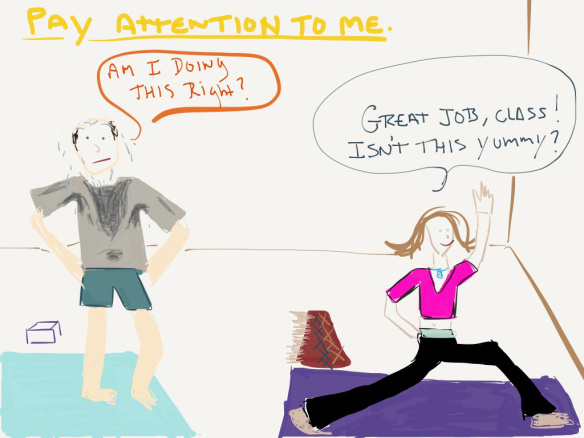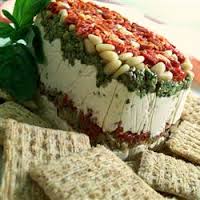|
This is Harry: my sweet, rage-filled baby. This is not how he looks all the time, but this is one of my very favorite pictures of him - it makes me laugh every time I see it.
I don't love this photo because I enjoy seeing my child suffer; I don't. I love it because it's such a clear reminder of his perspective, and my own. Until recently, Harry did not know hunger, pain or cold. He'd never felt fear or had a tummy ache or even seen light. Now, every day, he's bombarded by change. Sometimes it's pleasant, like the feeling of falling asleep as he's snuggled up against me, his belly full of milk made just for him. Other times it's (clearly) awful, like when he has to spend any time in his carseat or when the stroller slows down for a millisecond. Or speeds up. Or goes over a bump. Or is on a surface that is too smooth. Everything is new, and that means he has to adjust to a new reality. From my perspective, he's the most perfect human ever born, he's surrounded by people who ache with love for him and literally fight over who gets to change his diaper. He has all the advantages that come from being born into a financially and emotionally stable family in America. From pretty much every perspective I can think of, he's got it made. And so, I love this picture. This picture reminds me to be compassionate. It reminds me to stand a moment in someone else's shoes. It reminds me of the vulnerability that exists in this world, in babies, adults and animals, and what a beautiful gift it is to be trusted with that vulnerability. It reminds me of how much I have, how much I have seen, and how resilient I have become. It reminds me how much more there is to be experienced and shared in this life. (But also, that toothless wail is just too much.)
1 Comment
Did you know that yoga is an unregulated profession in the US? That means that yoga teachers probably took some kind of teacher training course, but there's no way to know what (if anything) they learned.
I have a friend who graduated from a chain studio teacher training. Let's call it Pore Cower. She added up all her hours of actual class time, and her 200 hour was comprised of 90 hours of lessons and the balance, 110 hours, was taking classes. She said their anatomy was a weekend that was so boring that she took almost nothing from it at all. It's true - I loved my 200 hour, but the anatomy I got from it was coloring in what seemed to be totally random pages from an anatomy coloring book and turning them in, never to see them or talk about them again. It was worse than useless. I could have spent my coloring time actually learning something. Or sleeping. I started teaching a course for other yoga teachers when I realized that my colleagues didn't understand what tendons or ligaments were or even how muscles work. How are they supposed to help students to protect the integrity of their joints if they don't understand how joints work? Or even how many bones are involved? I could go on and on... There's more to a yoga class than the physical movement, but let's be honest - most of a yoga class is made up of physical movements. The little talks at the beginning and end are maybe a big reason why we choose yoga over something else, but all the rest is really important, too. Yoga is not a magical fairy-exercise that causes no injury. It's NOT! I promise - science promises! You can get very injured by repeatedly doing poses in a sub-optimal way. Hip and shoulder replacements, chronic knee injuries and all sorts of arthritis are becoming very common in the yoga world, and researchers can show us exactly why. So what do you do? 1) Learn to REALLY listen to your body. I had been so conditioned to believe that the light pain or discomfort I was feeling in many poses and stretches were a sign that I was doing it right. Now I know, those sensations were telling me to back off, that my connective tissue was being stretched (bad) and my bones were rubbing together (so bad!). It has taken me years to start to learn to listen to my body, and to back off when something feels even a little bad, because a little bad a few times a week over the course of years leads to something really bad, like arthritis. 2) Don't trust teachers blindly. They might not know much more than you do. They could even know less about anatomy and functional movement. We're not doctors, and for those of us who make a living doing this, teaching group classes in studios and gyms, we are probably not making enough money to really dedicate our time to researching all the new studies and information out there. Try asking your teaching if they have read any good studies or books lately or taken any continuing ed. If they are studying, great! If they are studying the physical practice from a scientific perspective with respected teachers, please send me their names. :) I'd love to take their classes! 3) Let go of the competition. Push yourself, but not to win. There's no loser in yoga - only winners, as cheesy as that sounds. 4) Have realistic expectations. Yoga can help you with strength, flexibility, balance and equanimity. It won't cause you to lose or gain a significant amount of weight. It won't cause miracles in your life. It won't cure diseases. But it can be part of a holistic approach to healing mind, body and spirit. It can make you feel amazing and help you find community. It can inspire you and give you a sense of peace. It can't reverse your male pattern baldness and it can't make your lost love come back. But it can show you how to be you, proudly and courageously, through good times and hard times. (The drawing at the top of the page is from this website https://robcomplains.com/2013/01/16/9-rules-every-yoga-teacher-should-follow/#comment-14984 and the rest of the page is even more hilarious than this one.) Last week I was teaching an early morning yoga class for a convention at the Colorado Convention Center. When I arrived, the room we were supposed to be using was already set up for the day's events, so we were moved to the big lobby between the ballrooms. It was not ideal, as the staff was hurriedly setting up for the day all around us, but it was kind of funny to catch snippets of very private conversations being shouted as people went about their work, oblivious to the group of meditative yogis, or to shout "let your mind focus on your breath" over what sounded like someone emptying a huge box of silverware all over the floor. Then they started to set up the breakfast buffet about 4 feet from us. First came the fruit and bagels, the pastries and cereal. Then coffee - I saw a few students look up longingly as the aroma made it's way to us. Then they brought out trays and trays of bacon. Now, I've never liked bacon very much, so when I smelled it, I though, "Ew, how are they supposed to practice now? It smells so gross..." Then I noticed the looks on their faces. They were tortured by the bacon in a very different way than I was. I saw people swallowing hard, inhaling as though if they sniffed hard enough, they might get some bacon into their mouths somehow. We made it to the end of the class, and several of the students told me they knew it was a good class because they didn't abandon their mats to get a plateful of bacon. Compliments come in a many forms, especially to vegan chef yoga teachers. As you go through your next practice, notice if there's somewhere else you'd really rather be. If there is, maybe allow yourself to go with it, to leave your mat. But if there isn't, find the joy in being exactly where you want to be. Ann Swanson is coming March 13th to help us learn about Yoga for Arthritis! Yoga International recently shared a new study on the subject: "Longstanding modern medical wisdom often prescribes rest for those suffering from arthritis; however, a new study published in the Journal of Rheumatology may challenge that approach. It suggests that gentle yoga may significantly improve both mental and physical well-being. This randomized controlled trial studied 75 sedentary individuals who were prescribed 8 weeks of gentle yoga (3 hours per week), modified for individual needs. The results were dramatic, finding significant improvements in pain, general health, vitality, and mental health scales compared to a control group." Ann also has a lot of resources to share, even if you can't make it to the workshop: Meet Ann SwansonDeep relaxation (Guided Meditation)Chair pose at the WallSafe Seated Forward FoldHand Yoga for Arthritis and StiffnessYou can find even more at AnnSwansonWellness.com
This was our running joke when we lived in NYC. I was always carrying food, but the people begging almost never wanted my healthy snacks or fruit - they wanted burgers or fried chicken or just cash. This morning as I walked to work I met a young man who was asking for food or money. I looked in my bag. I had not brought a lot with me, but I had a handful of really juicy, sweet carrots. They weren't cut or peeled, just rinsed, as that is how I eat them. I hesitated, telling him I had some food, but it might not be what he wanted. He said anything would help, he was hungry. I held out half of my carrots. He grabbed them and then looked at me. He looked disappointed. I told him that they're really sweet and fresh, and he responded, "OH! I can bring them to the park later and feed them to the squirrels." "The squirrels?? That's my lunch! I offered it so you would get some nourishment," I told him, laughing but honestly a little offended. In the end, he said that he would eat them, but he may have been placating me. Now it's lunchtime, and I'm hungry, and he is probably eating a burger and feeding my organic carrots to the squirrels. So here's the question: do I have the right to be offended? I mean, from a yogic/spiritual/completely healthy perspective, I think that any gift should be given freely, without any intention of what happens to it next. We should give for the sake of giving, and once given, let go of any attachments to the gift. So that's what I'm working on... I'll let you know how it goes, I'd love to hear your thoughts. EVENT: In line with this theme, we will be starting our Lunches for Locals Program. We will be making PB&Js and then bringing them down to the Mission to hand out to anyone who wants some. Tuesday, February 2, 2016, 1-3 pm. We'll be at the studio making sandwiches until about 2, then head over to hand them out. Join us for any or all of it. :) Sign up for this free event HERE. This morning I taught a corporate meditation class. Out of ten students, two had never tried meditation before. Out of those two, I made one sob.
The meditation started with physical relaxation, then we worked through some manifestation scenarios - finding a bag of cash with his name on it, with a thank you note, from a mystery giver. A mystical woman who offers him three wishes - one easy, one hard but possible, the last something he could never achieve on his own, something impossible. I asked him (them) to imagine the feelings that would come with each of these. At the final one, the impossible wish, he started to cry. It was so sudden, I thought he was laughing at first - I thought maybe it was too ridiculous, too far outside of his comfort zone, and he couldn't help but laugh. I quickly realized he was crying, hard. I put my hand on his back and rubbed gently. We only had a minute or two left for meditation, so I finished the meditation, brought everyone back to their seats (mentally) and namaste-ed to end our session. I pushed my chair back to make room for him to make a beeline for the door, which he did. To be honest, my first thought was "yay, I helped someone to feel something real!" and, no, I'm not proud of that thought. It wasn't about me - which was my second thought. My third thought was "what do I do now? We're in an office..." In a yoga studio, a park, a grocery store - anywhere else, I would have been able to handle this. Crying in meditation or yoga is SO normal. But in an office, a BIG one with lots of dynamics and lots of departments full of employees who may not have ever met each other, with it's mysterious politics and rules... I was dumbstruck. I asked if anyone knew him, but they didn't. He was not crying over a house or a car. He was crying the way we only cry for people. I don't know what was wrong, but it was much bigger than the meditation. And my heart is breaking for him and his mystery sadness. I want to figure out what I should have done. I think "shoulds" are usually worse than useless, they're often harmful. But if I can figure out how I should have handled that, then next time I'll be prepared. I will do better. I will be able to allow the crying to be a part of the process. I will hopefully be able to make everyone more comfortable in an uncomfortable situation. The worst part is, I'm afraid I've turned him off of meditation forever. This week in my meditation classes we've been exploring connection. First go into your body. Without moving, feel the place where your right toes connect to your right foot, your right foot to your right ankle, etc until you do your whole body.
Then imagine an object, an orange is a good place to start. Imagine the orange entirely- the feel of the smooth, slightly waxy skin, the smell of its oils, the color, shape and weight. Then find a connection between the orange and something else - a carrot shares is color, air freshener shares is smell, a soccer ball shares its shape, choose one and explore it completely. Spend a few minutes moving from one object to the next, acknowledging the connection between the objects and imagining each object fully. After 10 or so objects, shift your focus to a gratitude. Focus on each gratitude for several breaths, then find a connection to another gratitude. Continue the chain of gratitudes for as long as you want. Notice how easy it is to keep your gratitudes going, how one good thing leads to three more. Living in a place of gratitude leads to more gratitude. While recognizing the good doesn't make the bad go away, it does make the bad a little more manageable. New Year’s Resolutions are fun to make, but for most of us, that’s about where they end. The execution is where everything usually falls apart. So, how do we create lasting change?
Your grief for what you’ve lost lifts a mirror
up to where you are bravely working. Expecting the worst, you look, and instead, here’s the joyful face you’ve been wanting to see. Your hand opens and closes, and opens and closes. If it were always a fist or always stretched open, you would be paralyzed. Your deepest presence is in every small contracting and expanding, the two as beautifully balanced and coordinated as birds' wings. -Rumi, 13th Century Persian Poet I love this poem. It is a poem about grief, loss, moving forward and finding balance. When we are at our worst, we can truly see how much progress we've made as emotionally intelligent individuals. After all, it's easy to be the yogi on the mountaintop, unaffected by others because there are no others around. It's much harder to be kind, thoughtful and centered in a world that is constantly testing you. Difficult situations show us how well (or poorly) we re-calibrate and find balance. They are tests, if we choose to see them that way. Sometimes we pass with flying colors. We find peace and even joy in the midst of the pain - not choosing one or the other, but letting them co-exist in your fluid inner world. During hard times, we find great clarity because we see that the answer is not always being happy; neither is it to dive deeply and completely into sadness or fear. The answer is to re-calibrate, to find some happiness or contentment or courage to balance the pain. We are all in what seems to be a constant search for balance. As soon as we find it, balance seems to slip away again. Just like in our standing poses on the mat, finding balance is about taking the time to notice where the weight is going and where it needs to go, and breathing as we slowly readjust,open and close, contract and expand. The answer is not to open up so completely that we forget how to close (or vice versa) - it is to be constantly re-calibrating, allowing ourselves to change from moment to moment, accepting that our needs vary from one day to the next, finding a balance of vulnerability and strength, and recognizing how the two go hand in hand. Our Grand Hopening was this past Monday, and despite the snow, we had quite a showing! And it was a good thing we did, because there was enough food to feed an army. Many guests asked for recipes, and I promised I would post a few, so here they are! Apologies that these are not the absolute easier recipes to execute, but they are pretty simple. Remember that recipes are made to be tweaked to your preference, ability or ingredients on-hand - don't be afraid to make these your own! (All ingredients listed are organic.) Pesto Artisinal Cheese: Cheese Ingredients: 2 packages sprouted, firm tofu, drained and crumbled by hand 1/2 cup cashews, soaked for an hour and rinsed 1 cup pumpkin seeds, soaked for an hour and rinsed 1/2 cup raw apple cider vinegar 1 1/2 teaspoons sea salt Pesto Ingredients: 1/4 cup cheese (above) 3/4 cup raw pumpkin seeds 1 large garlic clove, chopped 1/3 cup firmly packed sage 1 cup firmly packed Italian parsley 3/4 teaspoon sea salt Pulse all "cheese" ingredients in a food processor until smooth. Reserve 1/4 cup for the pesto, then bake at 450 for bake 450 for 50 minutes. (I like to bake cheese in unbleached parchment paper on a cookie sheet, but you can use whatever you have. The baking will help to dry the cheese so that it can be more solid than liquid.) After baking, let cool and then process once more until smooth. Toast the pumpkin seeds in a dry pan over a medium-low heat. Don't burn them! Pulse all "pesto" ingredients in a food processor until uniform and well-mixed. Use a 4" x 4" mould** and parchment paper to create your layered presentation. Cut two pieces of parchment paper to 4" x 18", and place on on top of the other to form a cross with equal sides. Place the center of the cross, where your paper overlaps, inside the square mould, on a plate. Now you have parchment paper covering the bottom and all four sides of your square, with the top open. Fill the mould with the cheese mixture, leaving about half an inch at the top. Carefully fill the top half inch with pesto. Fold the parchment paper over the pesto and put another plate over the parchment paper to hold it in place. Refrigerate overnight to set the layers. To serve, carefully remove the square mould and unfold the parchment paper. Serve with crackers or crudites. **If you do not have a mould, you can just layer everything in a tupperware or bowl. The presentation won't be quite as pretty, but it will still taste really good! Ginger-glazed carrots: 2 pounds carrots, chopped and steamed until tender 1/4 cup earth balance (vegan butter) or coconut oil 5 teaspoons chopped ginger 5 teaspoons chopped dried orange peel (or 1/4 cup fresh orange peel) 1 red onion, medium/large, diced 1 teaspoon coconut oil 1/8 cup diced ginger 1 Tablespoon molasses 2 Tablespoon toasted sesame oil 4 Tablespoon nutritional yeast 1 1/2 teaspoon sea salt 1 Tablespoon sugar in the raw 3 drops liquid stevia 1 Tablespoon black sesame seeds In a small saucepan, heat the earth balance, chopped ginger and orange peel over medium low heat for 7 minutes (covered), then cool and strain. Set aside. Carmelize the red onion over a medium heat with the teaspoon of coconut oil. Combine all remaining ingredients (except the sesame seeds) with the onions and the ginger-orange butter and mix well. Pour over carrots and mix well. Sautee over a medium heat for a few more minutes to cook off some of the liquid of the glaze and to carmelize the mixture on the carrots. Garnish with sesame seeds and serve warm or cold. Buen provecho! xo
|
AuthorAmanda has been teaching yoga and working as a vegan chef for over 10 years. Archives
August 2017
Categories |







 RSS Feed
RSS Feed
